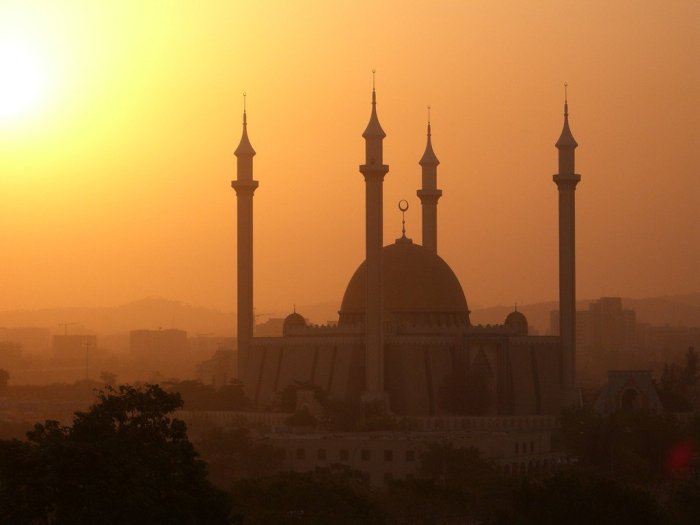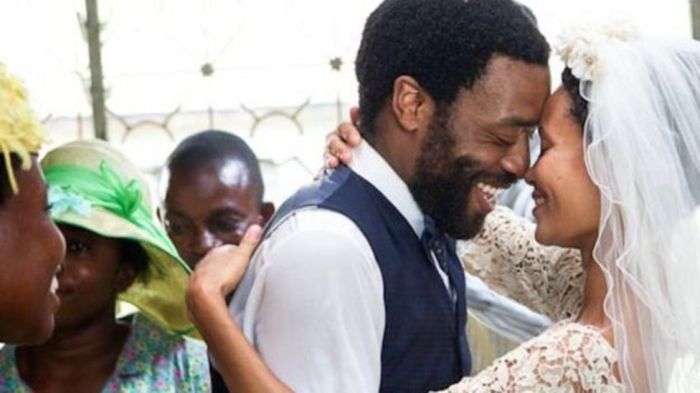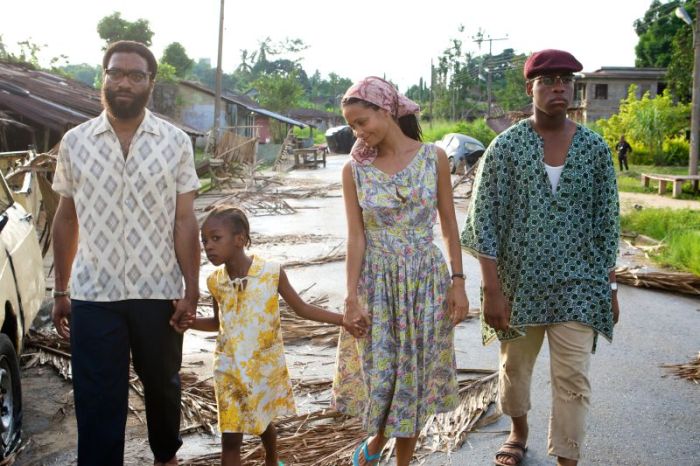Ugwu half of a yellow sun – In Chimamanda Ngozi Adichie’s poignant novel, “Half of a Yellow Sun,” Ugwu’s journey from childhood to adulthood unfolds amidst the turmoil of the Nigerian Civil War. As a witness to the horrors and complexities of the conflict, Ugwu’s perspective offers a unique lens through which to explore themes of identity, family, and the enduring power of hope.
Ugwu’s experiences as a houseboy in the household of Olanna and Odenigbo provide an intimate glimpse into the lives of those affected by the war. His relationships with Olanna, Kainene, and Richard shape his understanding of the world and his own place within it.
Literary Significance

Chimamanda Ngozi Adichie’s “Half of a Yellow Sun” is a literary masterpiece that explores the complexities of identity, family, love, and loss against the backdrop of the Nigerian Civil War.
Set in the 1960s, the novel follows the lives of two sisters, Olanna and Kainene, as they navigate the turbulent events of the war. Through their experiences, Adichie provides a nuanced and empathetic portrayal of the human cost of conflict.
Historical Context
The Nigerian Civil War (1967-1970) was a brutal conflict that resulted in the deaths of over one million people. The war was sparked by ethnic and political tensions between the Igbo people of southeastern Nigeria and the federal government led by General Yakubu Gowon.
Adichie’s novel captures the horrors of the war, from the mass killings and rapes to the widespread famine and displacement. She also explores the impact of the war on the characters’ sense of identity and belonging.
Themes
Identity:The war forces the characters to confront their own identities and the complexities of belonging. Olanna, an Igbo woman, struggles to reconcile her sense of self with the prejudice she faces from the federal government.
Family:The war tears families apart, both physically and emotionally. Olanna and Kainene are separated during the conflict, and their relationship is strained by the trauma they have endured.
Love:Love is a powerful force in the novel, but it is also tested by the war. Olanna’s love for her husband, Odenigbo, is challenged by his involvement in the Biafran army.
Loss:The war results in immense loss for the characters. They lose loved ones, their homes, and their sense of security. Adichie explores the psychological and emotional impact of loss, and how it can shape the lives of survivors.
Character Analysis

Ugwu, the houseboy in Adichie’s “Half of a Yellow Sun,” undergoes a transformative journey from childhood to adulthood amidst the turmoil of the Biafran War. As a witness to the novel’s events, his perspective offers valuable insights into the complexities of the conflict.
Childhood and Innocence
Initially, Ugwu is a naive and innocent boy, sheltered from the harsh realities of the world. His loyalty to Olanna and her family provides him with a sense of purpose and belonging. However, as the war intensifies, he is forced to confront the brutality and suffering that surround him.
Coming of Age
Through his experiences, Ugwu matures rapidly, witnessing firsthand the horrors of war and the fragility of human life. He learns to adapt to the changing circumstances, developing resilience and resourcefulness. His relationship with Kainene, a fellow servant, becomes a source of comfort and support during this challenging time.
Relationships, Ugwu half of a yellow sun
Ugwu’s relationships with Olanna, Kainene, and Richard are pivotal to his development. Olanna, his employer, becomes a surrogate mother figure, offering him guidance and protection. Kainene’s companionship and shared experiences foster a deep bond between them. Richard, a British journalist, exposes Ugwu to different perspectives and challenges his beliefs.
Symbolism and Motifs

Chimamanda Ngozi Adichie employs a rich tapestry of symbols and motifs in “Half of a Yellow Sun” to explore the complexities of the Biafran War and its aftermath.
Symbolism
The novel’s title, “Half of a Yellow Sun,” is a potent symbol that embodies the division and strife that plague the characters and the nation.
The hibiscus flower represents the resilience and beauty that persists amidst the chaos of war. Its vibrant colors symbolize hope and the possibility of renewal.
The tortoise serves as a symbol of patience and wisdom. Its slow and steady movement reflects the endurance and resilience of the characters in the face of adversity.
Rain is a recurring symbol throughout the novel. It represents both cleansing and renewal, offering hope for a better future after the devastation of war.
Motifs
Food plays a significant role in the novel, symbolizing nourishment, sustenance, and the importance of community. The sharing of meals and the preparation of traditional dishes evoke a sense of unity and shared experience.
Ugwu, the houseboy in “Half of a Yellow Sun,” is a complex character who embodies the innocence and vulnerability of his people during the Nigerian Civil War. While his story is set in a different time and place, the themes of persecution, injustice, and the search for truth resonate with those explored in “The Crucible.”
To delve deeper into these themes, consider taking the crucible act 3 test , which provides a comprehensive assessment of the play’s third act. By understanding the events of both “Half of a Yellow Sun” and “The Crucible,” we gain a broader perspective on the human experience and the enduring struggle for justice.
Music is another recurring motif, providing solace and a means of expression during times of hardship. The Igbo songs and rhythms serve as a reminder of cultural heritage and the power of art to transcend boundaries.
Storytelling is a powerful tool in the novel, allowing characters to share their experiences, connect with others, and preserve their collective memory. The stories told within stories create a rich tapestry of perspectives and experiences.
Cultural and Historical Context: Ugwu Half Of A Yellow Sun

Half of a Yellow Sun is deeply rooted in the Igbo culture of southeastern Nigeria. The novel portrays the Igbo people’s strong sense of community, their rich traditions, and their resilience in the face of adversity.
The Igbo Culture
- Clan System:The Igbo society is organized into clans, each with its own chief and council of elders. Clans play a significant role in decision-making and maintaining social order.
- Ancestral Veneration:The Igbo people have a strong belief in their ancestors and pay homage to them through rituals and ceremonies.
- Oral Tradition:Igbo culture is passed down through oral tradition, with stories, songs, and proverbs serving as important means of preserving history and transmitting values.
- Art and Crafts:The Igbo are renowned for their skilled craftsmanship, particularly in woodcarving, metalworking, and weaving.
- Agriculture:The Igbo are traditionally farmers, and their agricultural practices are deeply connected to their cultural beliefs and traditions.
Political and Social Tensions
The novel also sheds light on the political and social tensions that led to the Nigerian Civil War. These tensions included:
- Ethnic Divisions:Nigeria is a diverse country with over 250 ethnic groups. The Igbo, Yoruba, and Hausa are the three largest groups, and tensions between them have played a significant role in Nigerian history.
- Economic Inequality:The Igbo were often seen as economically successful, which led to resentment from other ethnic groups.
- Political Marginalization:The Igbo felt politically marginalized by the federal government, which was dominated by the Hausa and Yoruba.
- Military Coup:A military coup in 1966 led to the deaths of many Igbo officers and increased tensions between the Igbo and the federal government.
Impact of the War
The Nigerian Civil War had a devastating impact on Nigerian society. The novel portrays the war’s brutality, its human cost, and its long-lasting consequences.
- Loss of Life:The war resulted in the deaths of hundreds of thousands of people, both civilians and soldiers.
- Displacement:The war forced millions of people to flee their homes, creating a humanitarian crisis.
- Economic Devastation:The war destroyed infrastructure and disrupted economic activity, leading to widespread poverty.
- Social Divisions:The war exacerbated ethnic and religious divisions in Nigerian society, leaving a legacy of mistrust and conflict.
Style and Narrative Techniques

Adichie’s writing style in Half of a Yellow Sunis characterized by its lyrical prose, evocative imagery, and intricate narrative structure. Her use of language is precise and poetic, creating a vivid and immersive reading experience.
Use of Multiple Perspectives
The novel is narrated from the perspectives of multiple characters, including Ugwu, Olanna, and Richard. This multifaceted storytelling approach allows readers to gain insights into the different experiences and perspectives of individuals during the Nigerian Civil War. It also creates a sense of emotional depth and complexity, as readers can witness the war’s impact on various lives.
Use of Flashbacks and Foreshadowing
Adichie skillfully employs flashbacks and foreshadowing to build suspense and emotional depth. Flashbacks provide context and insights into the characters’ past experiences, while foreshadowing hints at future events, creating a sense of anticipation and unease. This narrative technique enhances the novel’s emotional resonance and keeps readers engaged throughout the story.
Top FAQs
Who is Ugwu?
Ugwu is a young houseboy who witnesses the events of the Nigerian Civil War firsthand.
What is the significance of the “half of a yellow sun”?
The “half of a yellow sun” symbolizes the Biafran flag and the hopes and dreams of the Igbo people during the war.
How does the war affect Ugwu’s life?
The war forces Ugwu to confront the realities of violence and loss, and it shapes his understanding of the world.